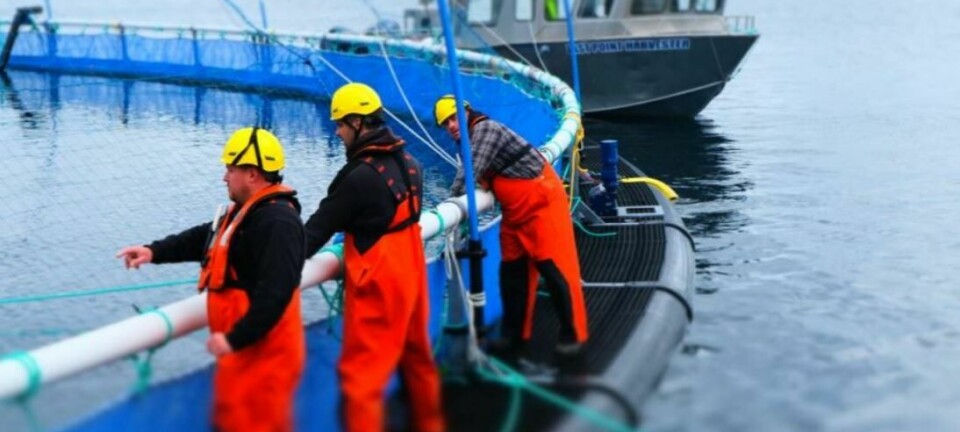
Grieg begins first salmon harvest in Newfoundland
Farmer reports no problems with lice and 92% full-cycle survival rate for triploid fish
Norway and Canada salmon farmer Grieg Seafood has commenced its first harvest in Placentia Bay, Newfoundland, where it has exclusive rights to produce salmon.
Last week, the first fish were harvested and then packed at Quinlan Brothers Ltd’s processing plant in Bay de Verde before they were transported to customers in the North American market, Grieg said in a press release. The company expects to harvest 5,000 gutted weight tonnes in Placentia Bay this year.
Fish from Grieg’s Red Island farm in the bay are currently being harvested. The first generation of fish spent about a year in Grieg Seafood’s freshwater and smolt facility in Marystown, Newfoundland and Labrador (NL), and was transferred to two marine sites in Placentia Bay in 2022.
Best practices
Grieg said it had experienced no lice issues, and that deep pens, best practices, and the lack of need for treatments of any form had contributed to good fish health and welfare throughout the production cycle. The first generation has a survival rate of 92%. The annual survival rate of all fish in the marine sites is currently 96%.
A second generation of smolts was transferred to three other new marine sites in the spring and summer of 2023, and will be harvested in 2024.

Andreas Kvame, chief executive of Norwegian-owned Grieg, said: “This first, successful generation shows what enormous potential Placentia Bay in Newfoundland holds for sustainable salmon farming. This is especially true in light of the booming North American market just next door, where consumers are increasingly asking for local, healthy and climate friendly food.
“We will continue to develop our production in Newfoundland gradually and responsibly during the years to come. I want to congratulate all of my hard-working colleagues in Newfoundland with this achievement.”
Knut Skeidsvoll, managing director of Grieg Seafood Newfoundland, said: “I am pleased with the biological performance of the first generation, including the survival rate as well as strong sea lice control.”
He added: “We will keep developing our Newfoundland region step by step, and create jobs and value for the communities where we operate for years to come.”
Triploid salmon
Licences issued by NL authorities stipulate that Grieg must use sterile triploid salmon in Placentia Bay to prevent them interbreeding with wild Atlantic salmon if they escape. Triploids have a third set of chromosomes induced by pressure treatment at the egg stage. This makes the fish infertile but has also been linked to health issues in triploids grown in Norway, where there is a moratorium on triploid use. Grieg has not reported similar problems in NL.
Grieg is the only company with permission to farm salmon in Placentia Bay and plans to eventually produce up to 45,000 tonnes of fish per year there. It has also been awarded rights to develop the Bays West aquaculture area, west of Placentia Bay, with a potential to produce an additional 20,000 tonnes of salmon.
The company has 14 licences in NL and has applied for more.
























































